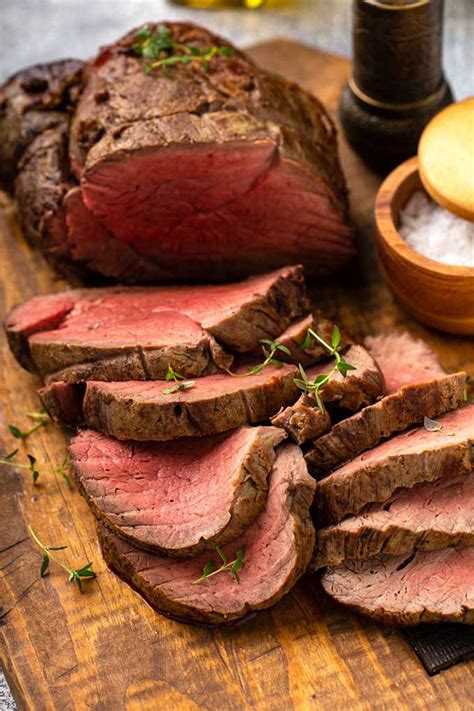The Ultimate Guide to a Perfect Beef Tenderloin Roast
Are you ready to impress your guests with a succulent and flavorful beef tenderloin roast? This comprehensive guide will walk you through every step, from selecting the perfect cut to achieving that restaurant-quality sear and juicy interior. We'll cover essential tips and tricks to ensure your beef tenderloin roast is a resounding success, every single time.
Selecting Your Beef Tenderloin
The first step to a perfect roast is choosing the right cut of meat. Look for a tenderloin that's brightly colored, firm to the touch, and free of excessive fat or discoloration. A tenderloin weighing between 2 and 4 pounds is ideal for most home cooks.
Understanding the Cut
The beef tenderloin is known for its exceptional tenderness, making it a prized cut. However, its lean nature requires careful cooking to avoid dryness. This recipe focuses on techniques to maintain optimal moisture and flavor.
Preparing the Beef Tenderloin for Roasting
Trimming the Fat
Gently trim away any excess fat from the tenderloin, leaving a thin layer for flavor and moisture. Avoid removing too much fat, as it contributes to the overall richness of the roast.
Seasoning the Tenderloin
Seasoning is key to a delicious beef tenderloin. A simple yet effective seasoning blend includes:
- Kosher salt: Generously season all sides of the tenderloin.
- Freshly ground black pepper: A generous amount enhances the savory notes.
- Garlic powder: Adds a subtle depth of flavor.
- Onion powder: Complements the garlic powder beautifully.
Pro Tip: For an extra layer of flavor, consider adding a sprinkle of dried herbs like rosemary or thyme.
Roasting the Beef Tenderloin to Perfection
We'll explore two popular roasting methods:
Method 1: Oven Roasting
- Preheat your oven to 425°F (220°C).
- Sear the tenderloin: Heat a heavy-bottomed skillet over medium-high heat. Sear the tenderloin on all sides until nicely browned. This crucial step develops a delicious crust.
- Roast in the oven: Transfer the seared tenderloin to a roasting pan. Roast for approximately 15-20 minutes for medium-rare, or until your desired internal temperature is reached.
- Rest the meat: Once cooked, remove the tenderloin from the oven and let it rest for at least 15-20 minutes before slicing. This allows the juices to redistribute, resulting in a more tender and flavorful roast.
Method 2: Reverse Sear
- Season and roast: Preheat oven to 275°F (135°C). Season your tenderloin and place it on a roasting rack in a baking dish. Roast until it reaches an internal temperature of 120-125°F (49-52°C) for medium-rare, or your desired doneness.
- Sear: Once the tenderloin has reached the desired internal temperature, remove it from the oven and increase your oven temperature to 500°F (260°C). Sear the tenderloin in a very hot oven or cast iron skillet for 2-3 minutes to achieve a perfect sear.
- Rest: Let the meat rest for at least 15-20 minutes.
Checking for Doneness
Use a meat thermometer to ensure your beef tenderloin is cooked to your desired doneness:
- Rare: 125°F (52°C)
- Medium-rare: 130-135°F (54-57°C)
- Medium: 140-145°F (60-63°C)
- Medium-well: 150-155°F (66-68°C)
- Well-done: 160°F (71°C)
Serving Your Perfect Beef Tenderloin Roast
Once rested, slice the tenderloin against the grain into ½-inch thick slices. Serve immediately and enjoy! Pair it with your favorite sides, such as roasted vegetables, mashed potatoes, or a simple salad.
Conclusion
Mastering the art of roasting a beef tenderloin takes practice, but with these tips and techniques, you'll be well on your way to creating a truly memorable meal. Remember to focus on selecting a quality cut, proper seasoning, and careful temperature control to achieve a succulent and flavorful roast that will impress your guests. Happy cooking!
